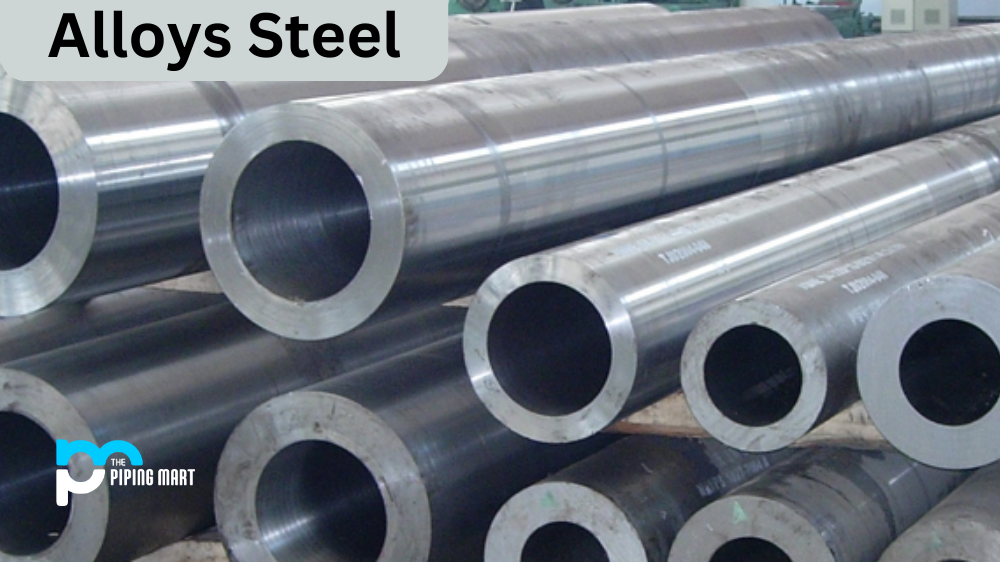Alloy steel is a popular choice in engineering and construction industries because it is strong, durable, and resistant to wear and tear. This type of steel combines two or more metallic elements mixed with non-metallic elements. The mixture of these elements improves the properties of alloy steel and adds to its versatility. In this blog post, we’ll explore the different types of alloy steel and their applications.
What is Alloy Steel?
Alloy steel is a type of steel that contains multiple alloying elements in addition to iron and carbon. These alloying elements, such as manganese, nickel, chromium, and vanadium, are added to the base steel to improve its strength, hardness, corrosion resistance, and other properties. This makes alloy steel a highly versatile material used in various applications across industries ranging from automotive and aerospace to construction and infrastructure.
One of the key advantages of using alloy steel is its superior strength. Combining different alloying elements creates a stronger bond between the iron atoms in the steel matrix. This increases tensile strength and impact resistance compared to traditional carbon steels. As a result, alloy steels are widely used in structures where high load-bearing capacity is essential.
Another important feature of alloy steel is its exceptional corrosion resistance. Adding elements like chromium gives it excellent resistance against rust and other forms of chemical degradation. This makes it an ideal choice for applications that involve exposure to harsh environments or corrosive substances.
A Comprehensive Guide to Types and Applications
Low Alloy Steel:
Low alloy steel comprises 1 to 5 per cent of alloying elements, including chromium, molybdenum, nickel, tungsten, and vanadium. These elements improve the steel’s strength, durability, and resistance to corrosion. They are commonly used in constructing pipelines, pressure vessels, and chemical processing equipment.
High Alloy Steel:
High alloy steel contains more than 5 per cent of alloying elements, which include cobalt, copper, manganese, silicon, and titanium. This type of steel is known for its high strength and toughness, resistance to corrosion and oxidation, and wear resistance. They are commonly used in the aerospace, automotive, and medical industries.
Stainless Steel:
Stainless steel is a high alloy steel known for its corrosion resistance. It is made up of at least 10.5 per cent chromium, which reacts with air to form a protective layer of chromium oxide on the surface of the steel. This layer protects the steel from rust and corrosion. Stainless steel is commonly used in kitchen equipment, medical devices, and architectural applications.
Tool Steel:
Tool steel is a high alloy steel known for its hardness and wear resistance. It is commonly used in manufacturing cutting tools, dies, and moulds due to its ability to maintain hardness at high temperatures. It is also used to construct machinery, weapons, and oil and gas drilling equipment.
Alloy Steel Applications:
Alloy steel is used in various applications, including construction, automotive, aerospace, and medical industries. Alloy steel is commonly used in the construction of buildings, bridges, and pipelines due to its high strength and durability. It is also used in the automotive industry to manufacture engines and chassis components. In the aerospace industry, it is used to manufacture aircraft engines, landing gears, and fuel systems.
Conclusion:
In conclusion, alloy steel is a versatile material with numerous applications in various industries. Its strength, durability, and resistance to wear and tear make it a popular choice for the construction, automotive, and aerospace industries. In this blog post, we explored different alloy steel types and their applications. With its unique properties, alloy steel is here to stay and will continue to play a vital role in various industries.
Sakshee is a talented blogger, with a particular focus on the Business and Metal Industry. She is passionate about sharing her insights on various metal products and helping professionals to make a better decisions.




